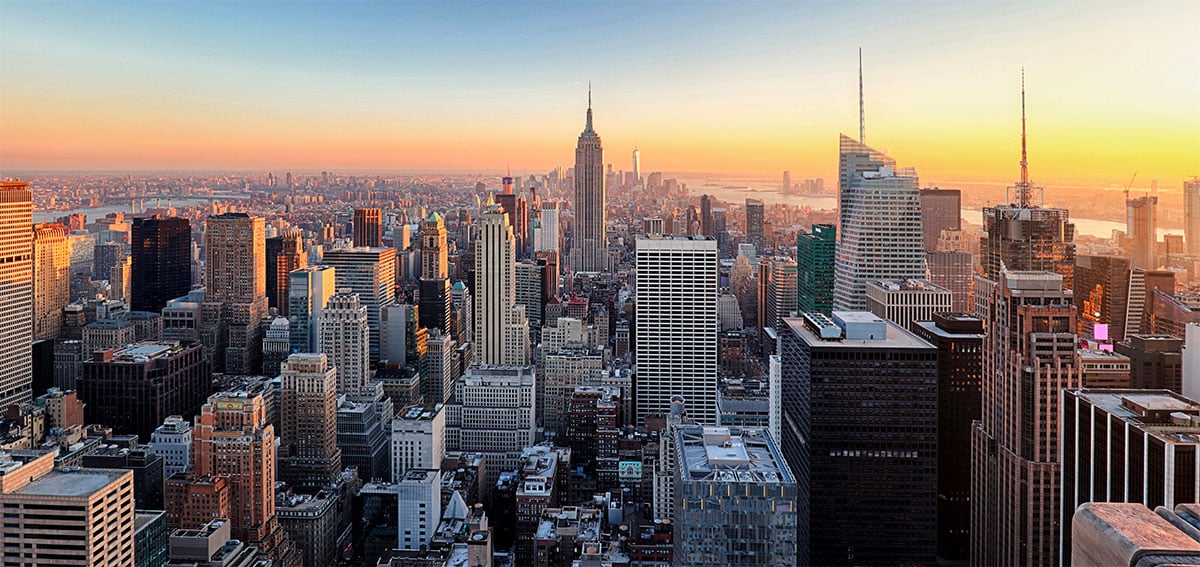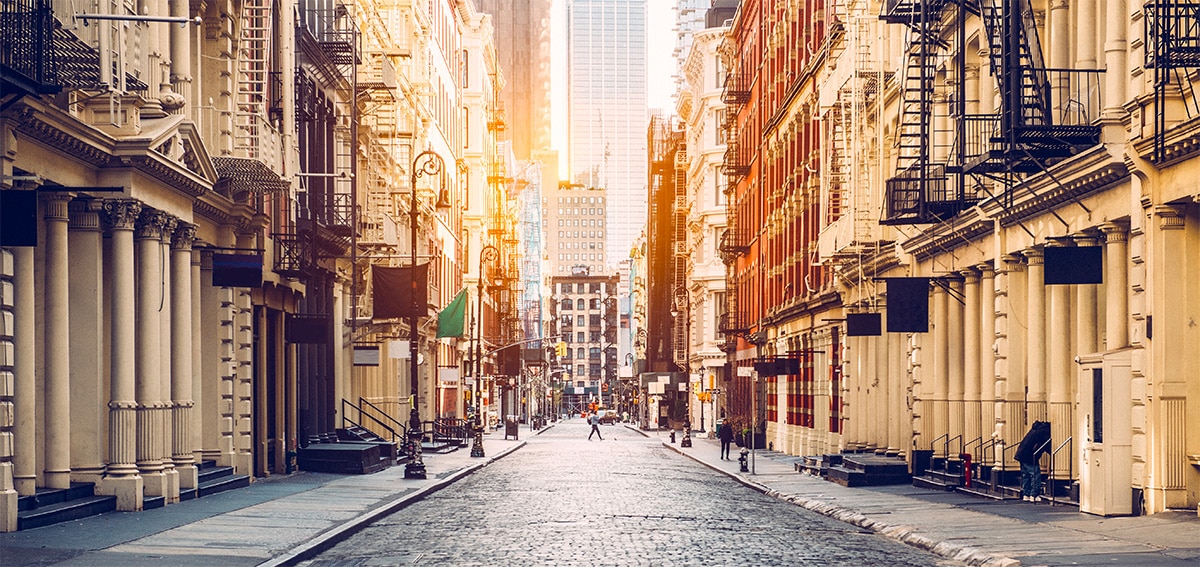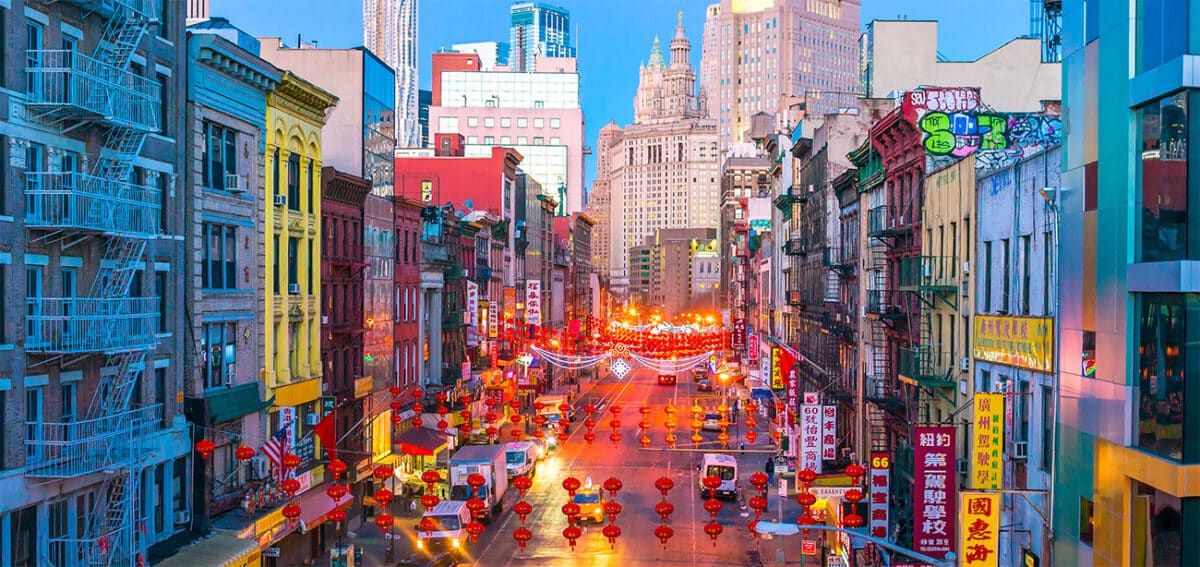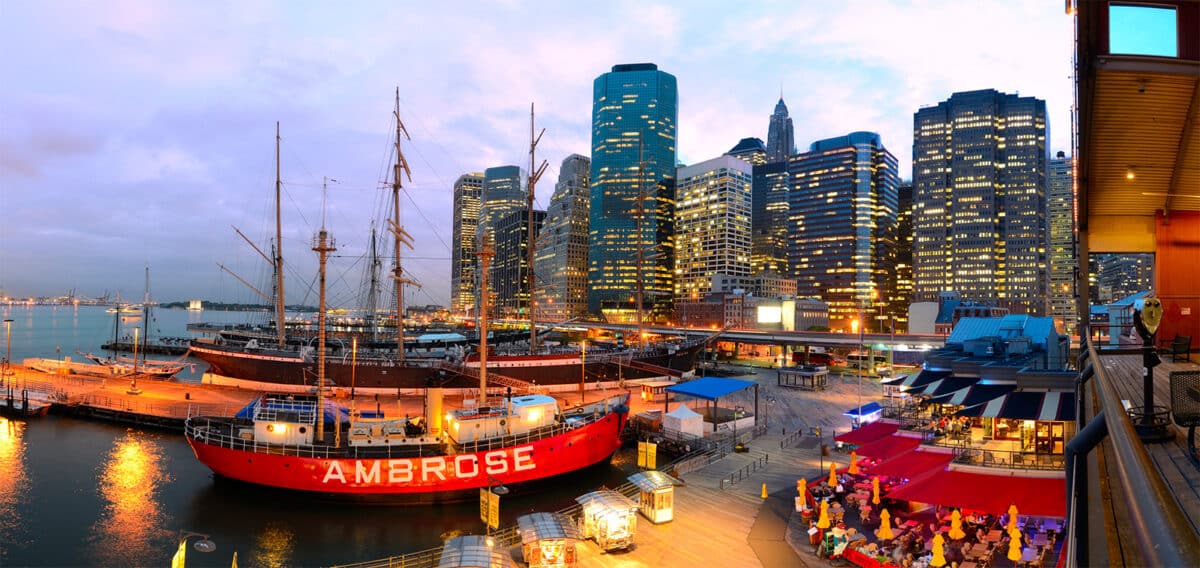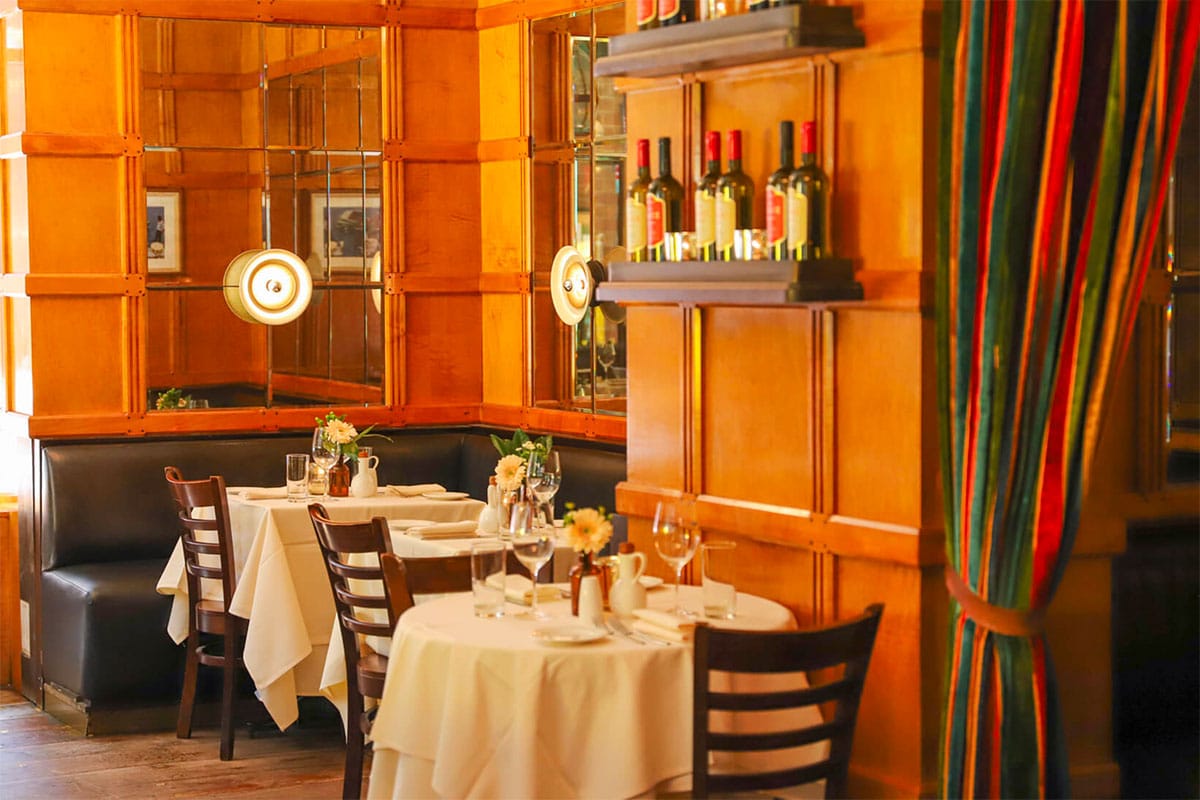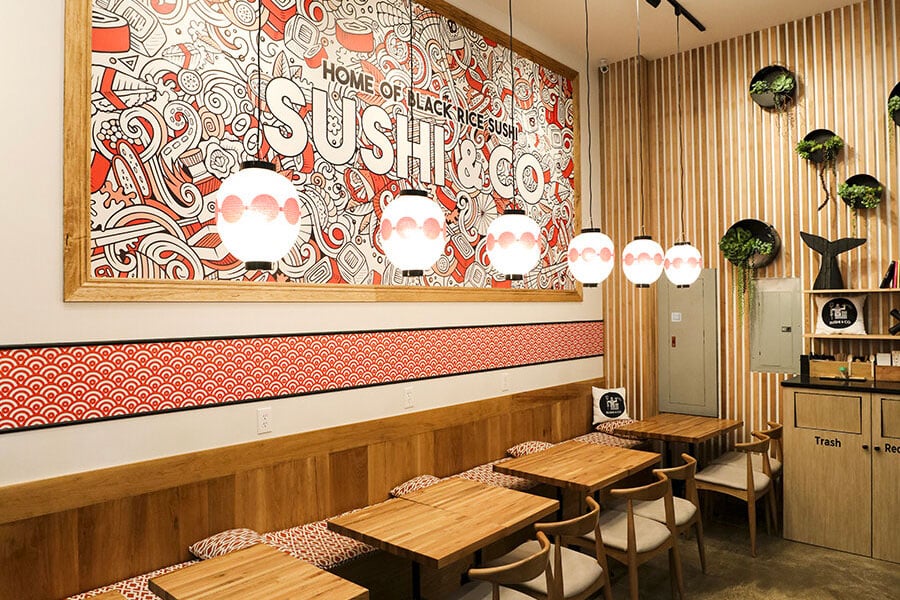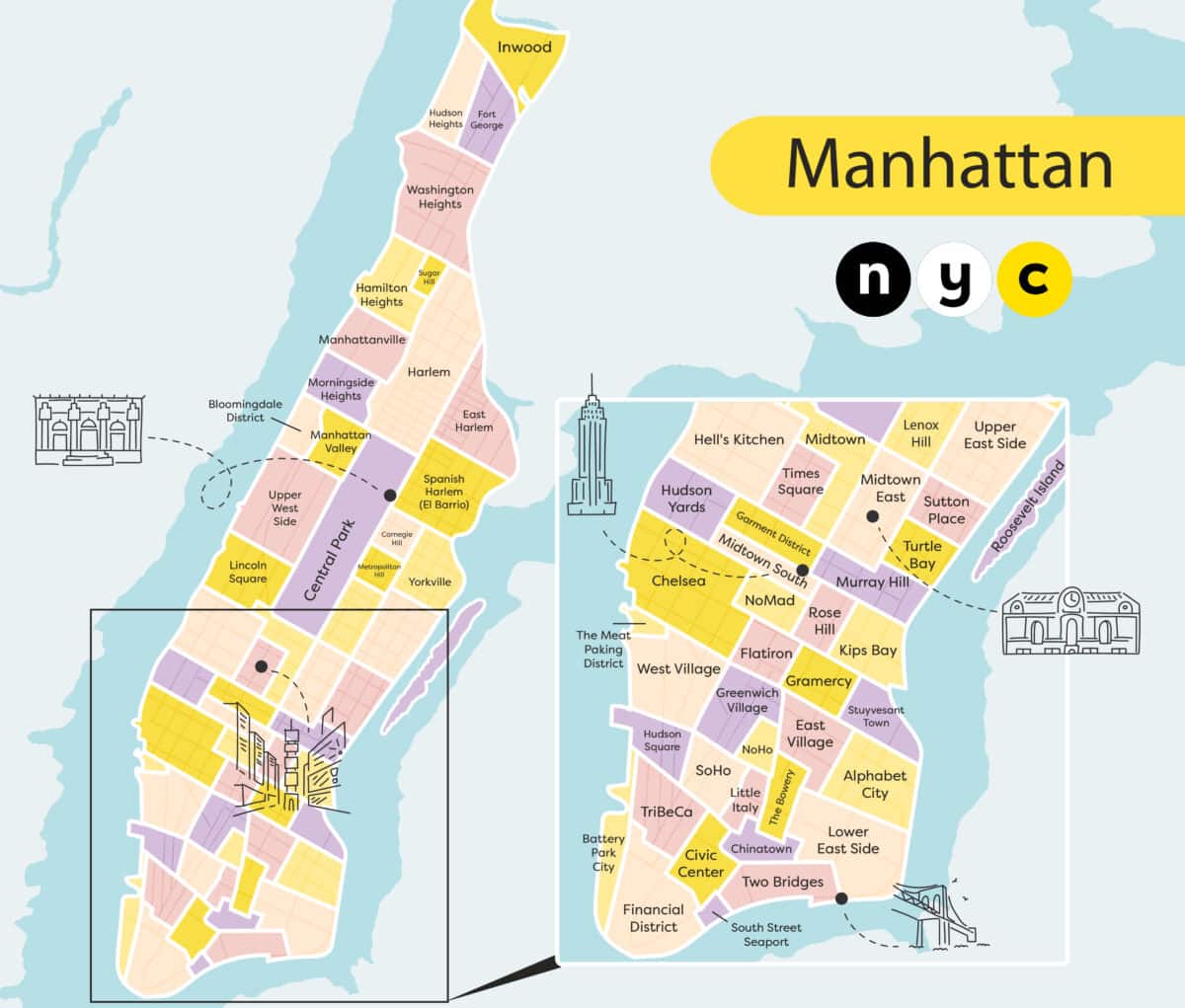The Financial District, or FiDi, is the historic and financial heart of New York. Located at the southern tip of Manhattan, this iconic district embodies both the city’s colonial heritage and its status as the world’s business capital. Here, towering skyscrapers, cobbled streets and historic monuments sit side by side, offering visitors a fascinating immersion in the history and power of Wall Street.
The history of the Financial District
The Financial District is the birthplace of New York and the heart of global finance. Its history began in the 17th century, when the Dutch founded New Amsterdam and built a defensive wall against the British, which gave rise to the name Wall Street. After the English conquest in 1664, the city became New York, a centre of commerce and trade.
It was here that George Washington took the oath of office in 1789 at Federal Hall, marking the official birth of the United States. A few years later, in 1792, theButtonwood Agreement laid the foundations for the New York Stock Exchange, making Wall Street the epicentre of the financial markets. The 19th century saw the district transformed into an international economic hub, where banks and insurance companies took root.
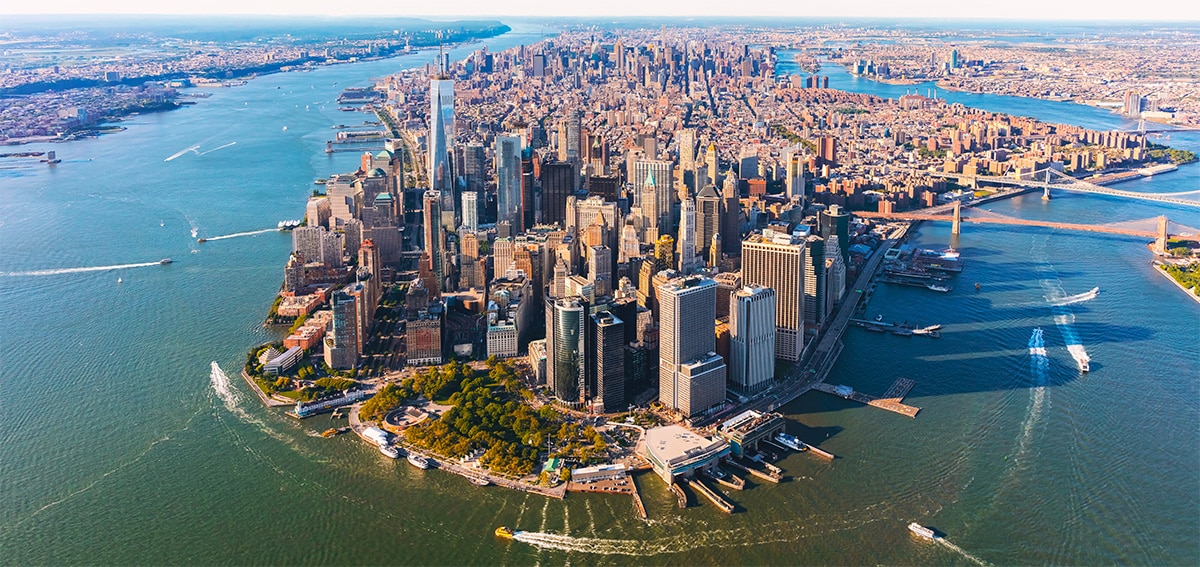
The 20th century was marked by the rise of the stock market, but also by major crises, notably the crash of 1929, which plunged the world economy into the Great Depression. Despite this, the district continued to evolve and to host ever more impressive skyscrapers, including the World Trade Center, a symbol of American dynamism.
On 11 September 2001, the attacks on the Twin Towers changed the history of the Financial District forever. Today, One World Trade Center and the 9/11 Memorial & Museum are a reminder of both the tragedy and the resilience of New York.
Today’s Financial District is about more than finance. With its historic buildings like Trinity Church, iconic streets like Stone Street, and modern infrastructure like theOculus, it has become a dynamic district where past and present merge. A glance at its monuments is all it takes to understand the extent to which this district has shaped the history of New York and the whole world.
Visit the Financial District: 30-minute walking tour
The Financial District is a district worth exploring at different times of the day. In the morning, it is bustling with traders and office workers, while in the evening, its bars and restaurants offer a more relaxed atmosphere. With its unique blend of history, modernity and iconic landmarks, FiDi is a must-see for any visitor to New York. This itinerary allows you to discover all the iconic places in the Financial District, optimising your travel and making the most of each site.
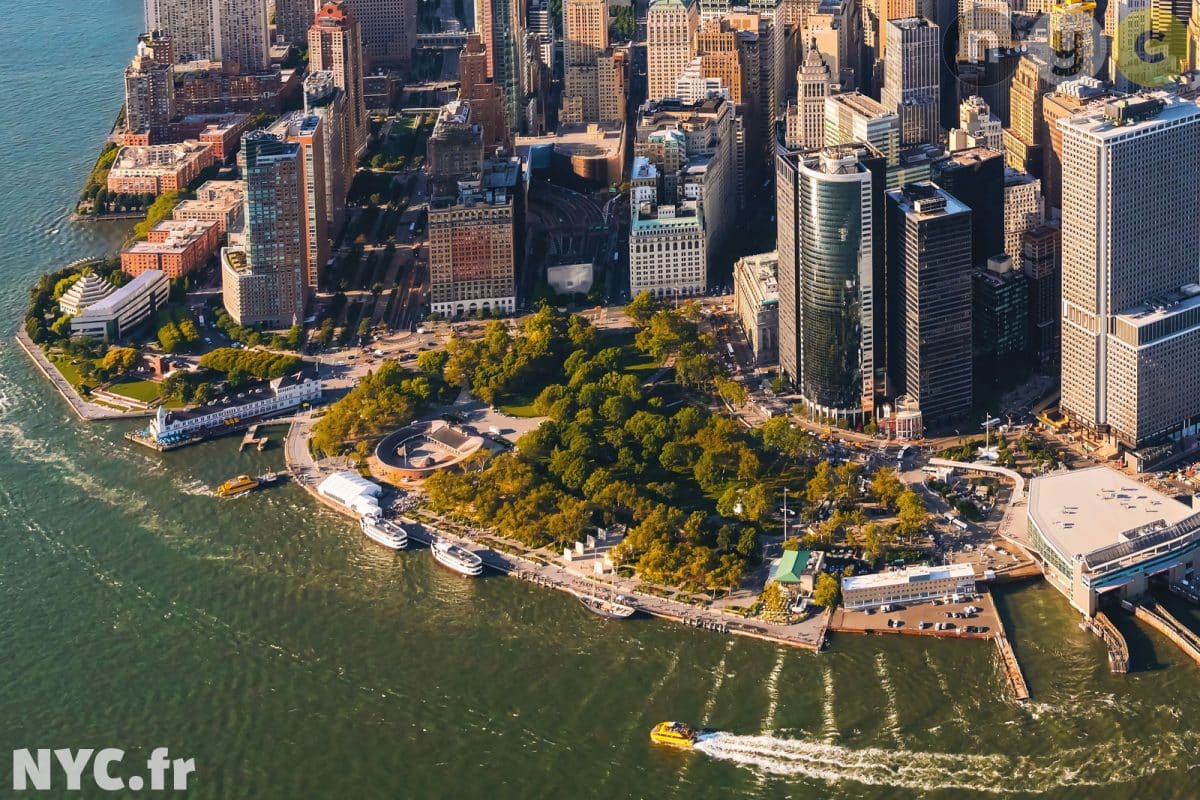
The Battery
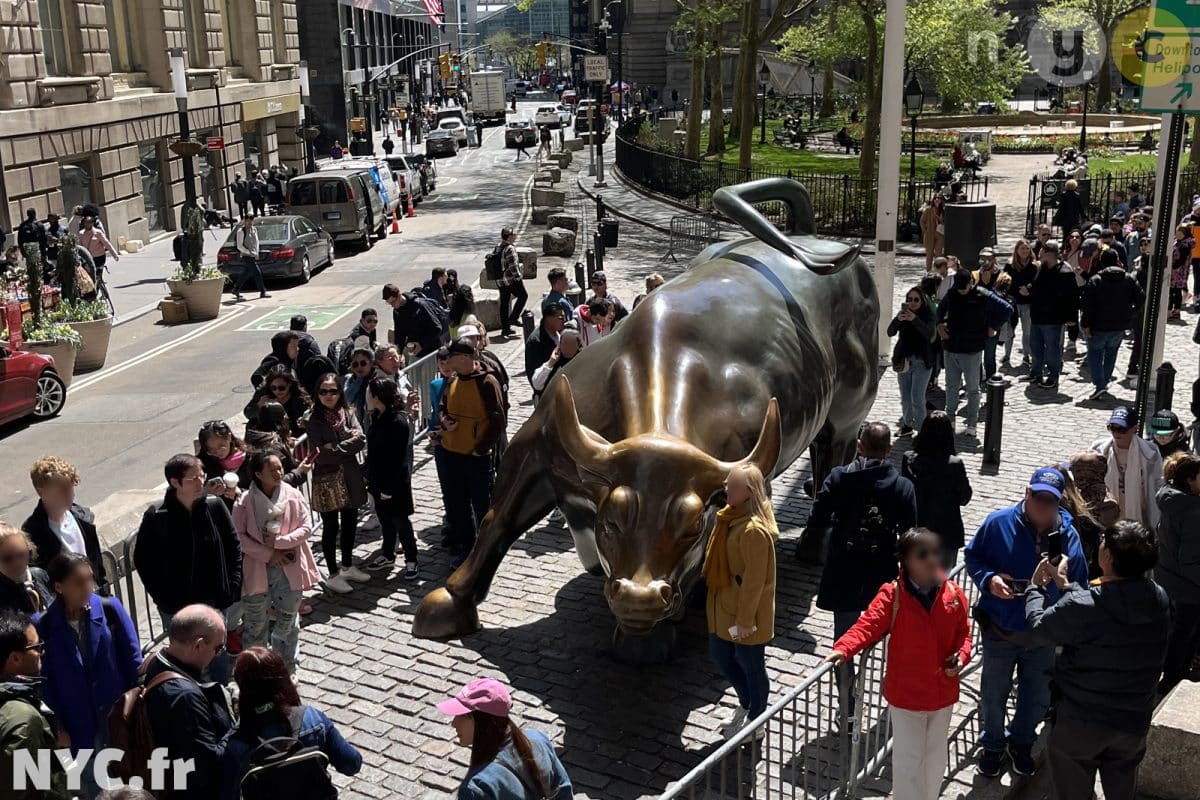
Charging Bull
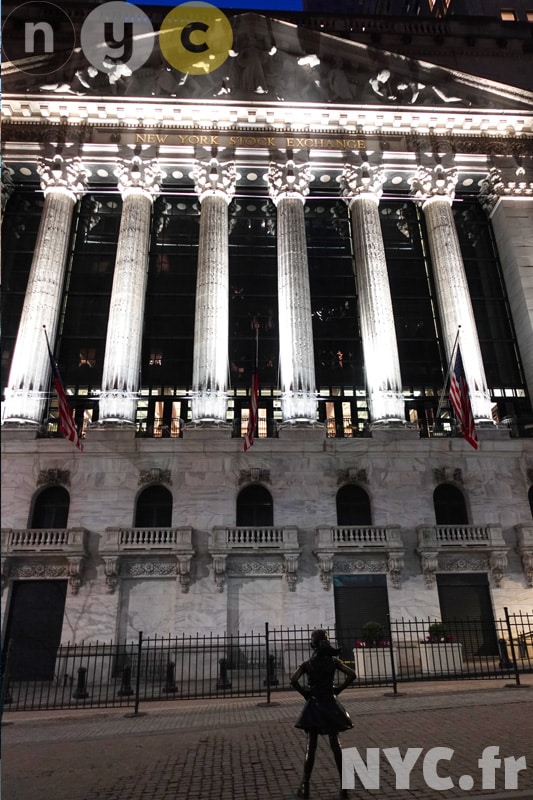
Wall Street & Fearless Girl
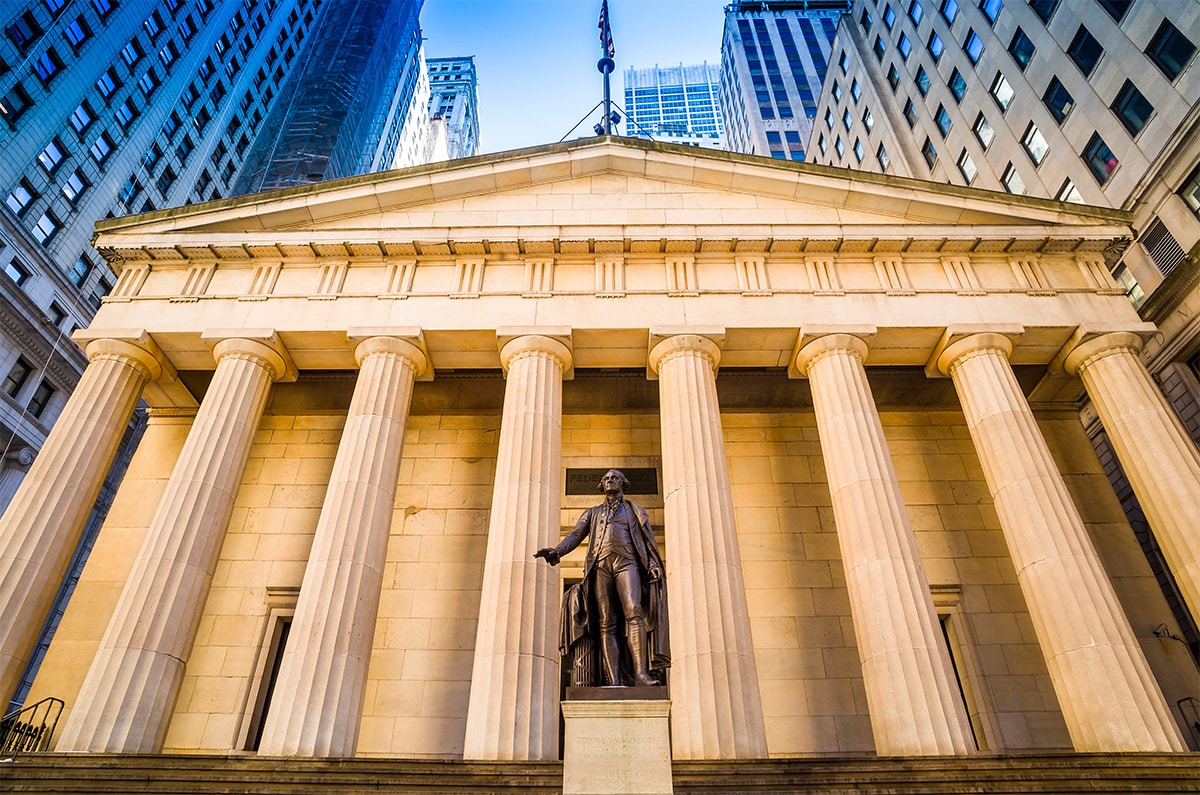
Federal Hall National Memorial
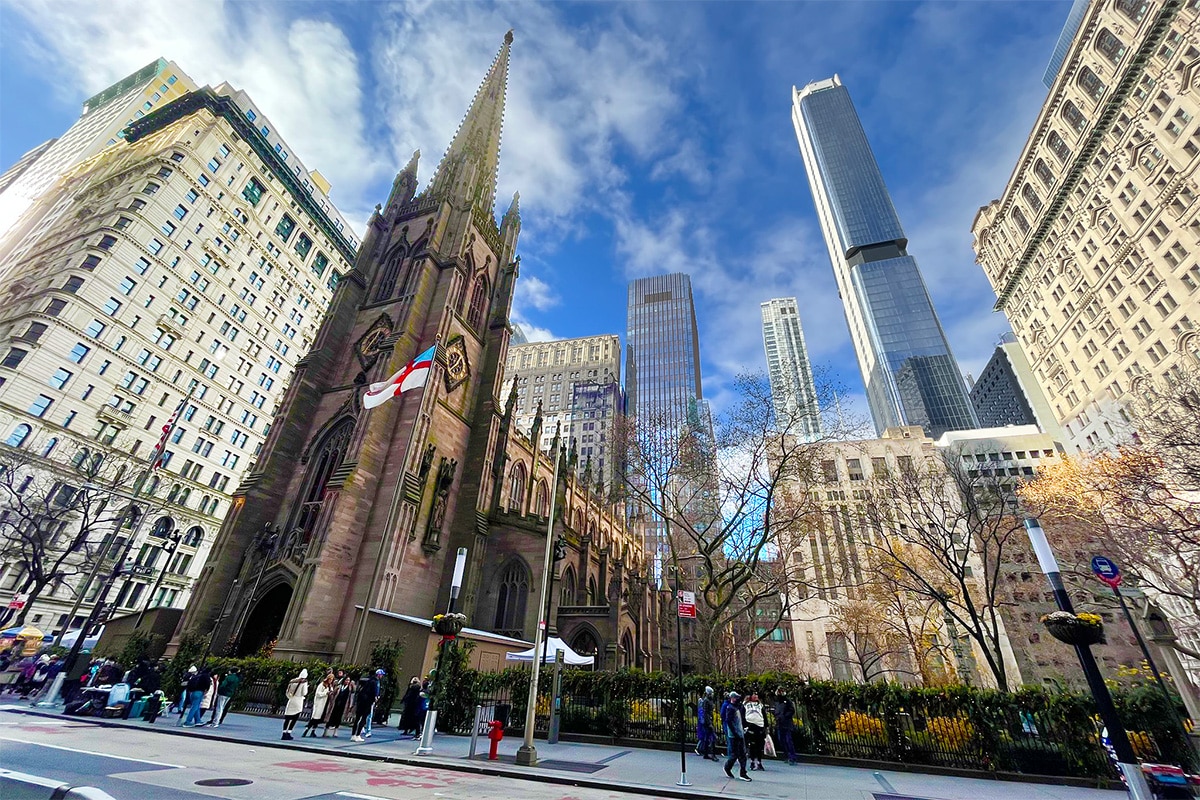
Trinity Church
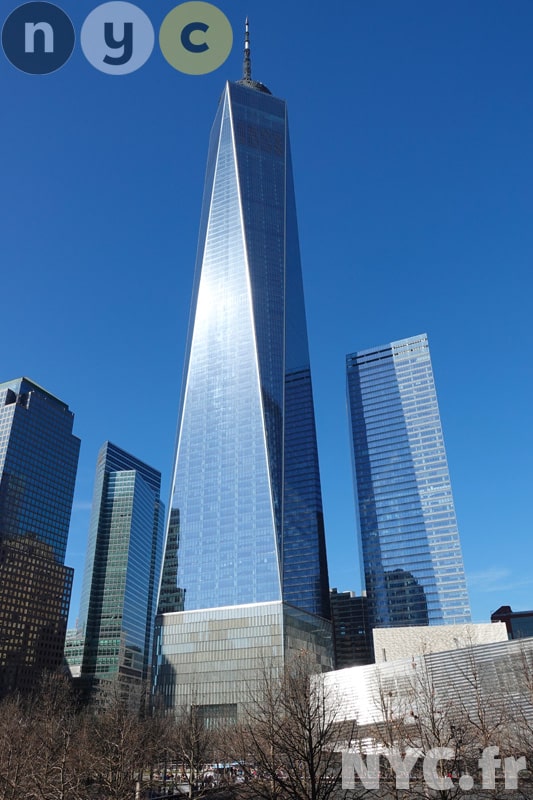
One World Trade Center
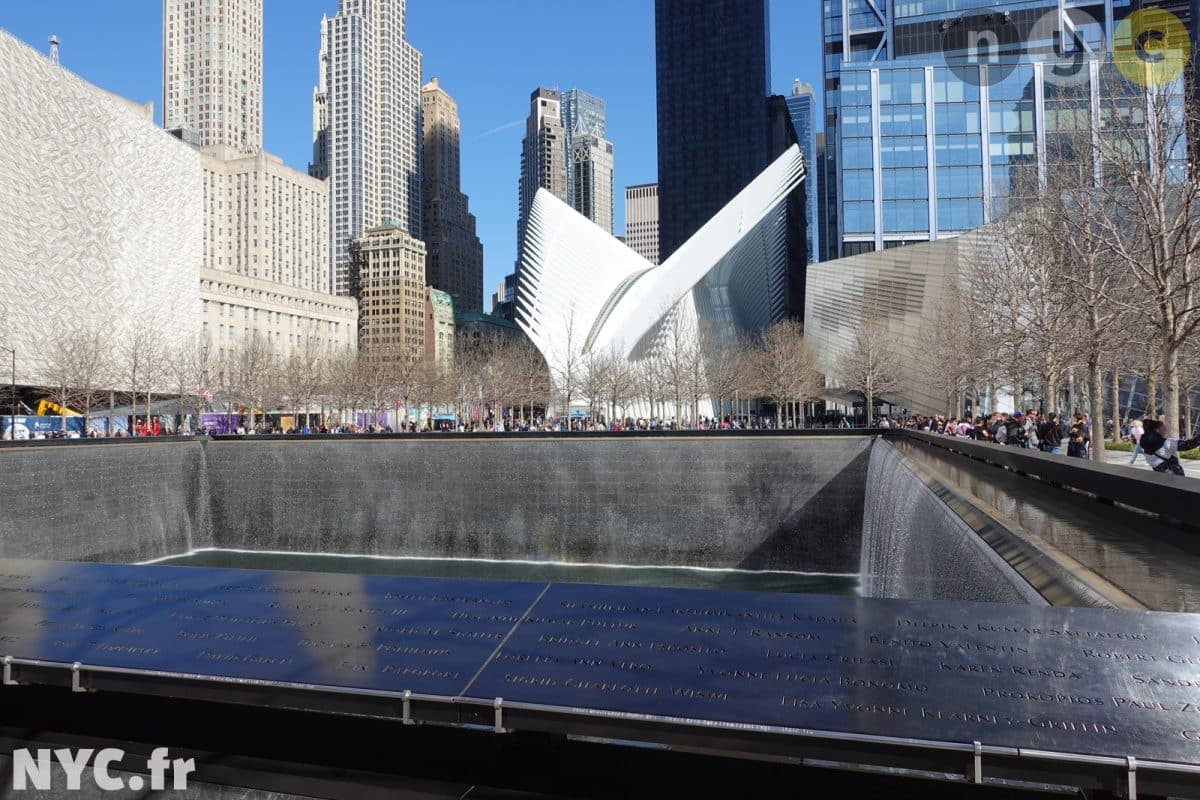
9/11 Memorial & Museum
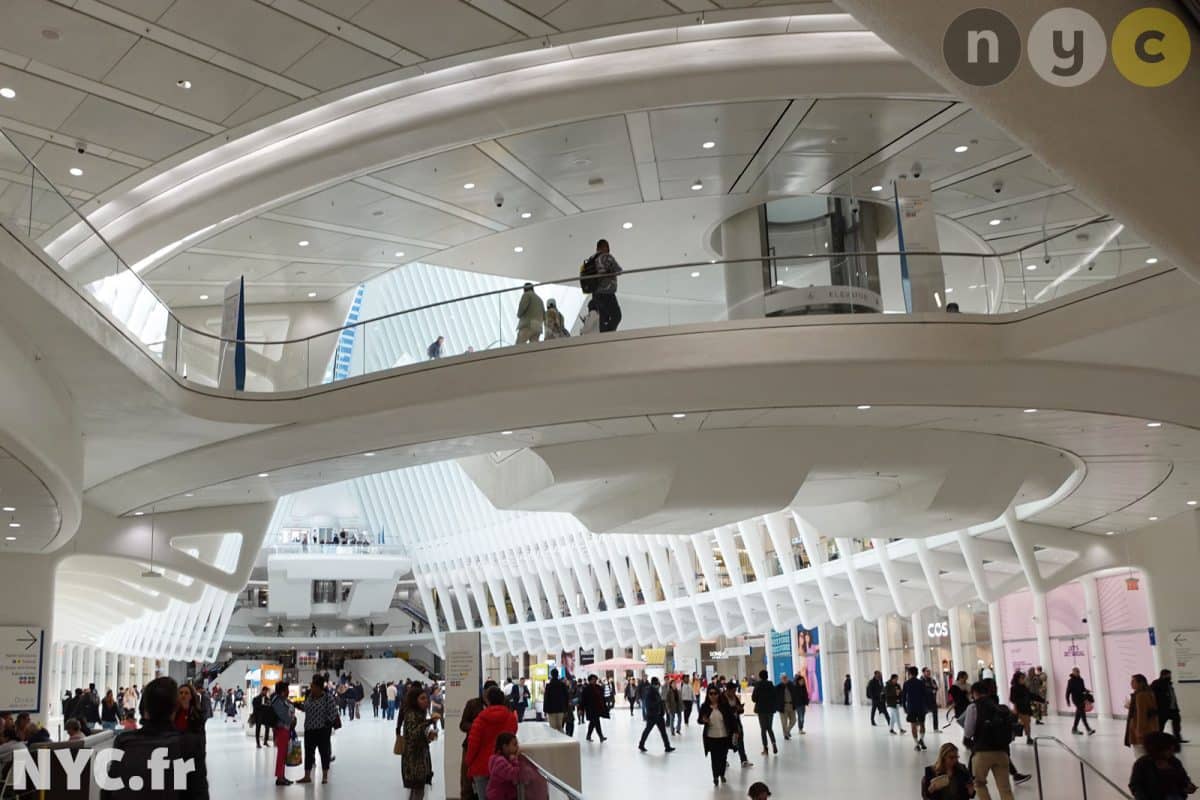
Oculus and Westfield World Trade Center
Where to eat in the Financial District
Eating in the Financial District means choosing between historic addresses, modern food courts and restaurants with uninterrupted views over Manhattan. Small cobbled streets like Stone Street are perfect for a gourmet break in a lively atmosphere, with terraces where you can enjoy a meal al fresco. For a quick lunch, the neighbourhood’s food trucks and delis offer a variety of options, from New York sandwiches to dishes inspired by world cuisine.
Food lovers can also take advantage of restaurants set in the high floors of skyscrapers, offering a culinary experience with spectacular views of the upper bay and the two rivers. Between the hustle and bustle of the traders during the week and the calm of the district at the weekend, every moment of the day offers a different atmosphere in which to discover the flavours of the Financial District.
6 recommended gourmet stops in the Financial District
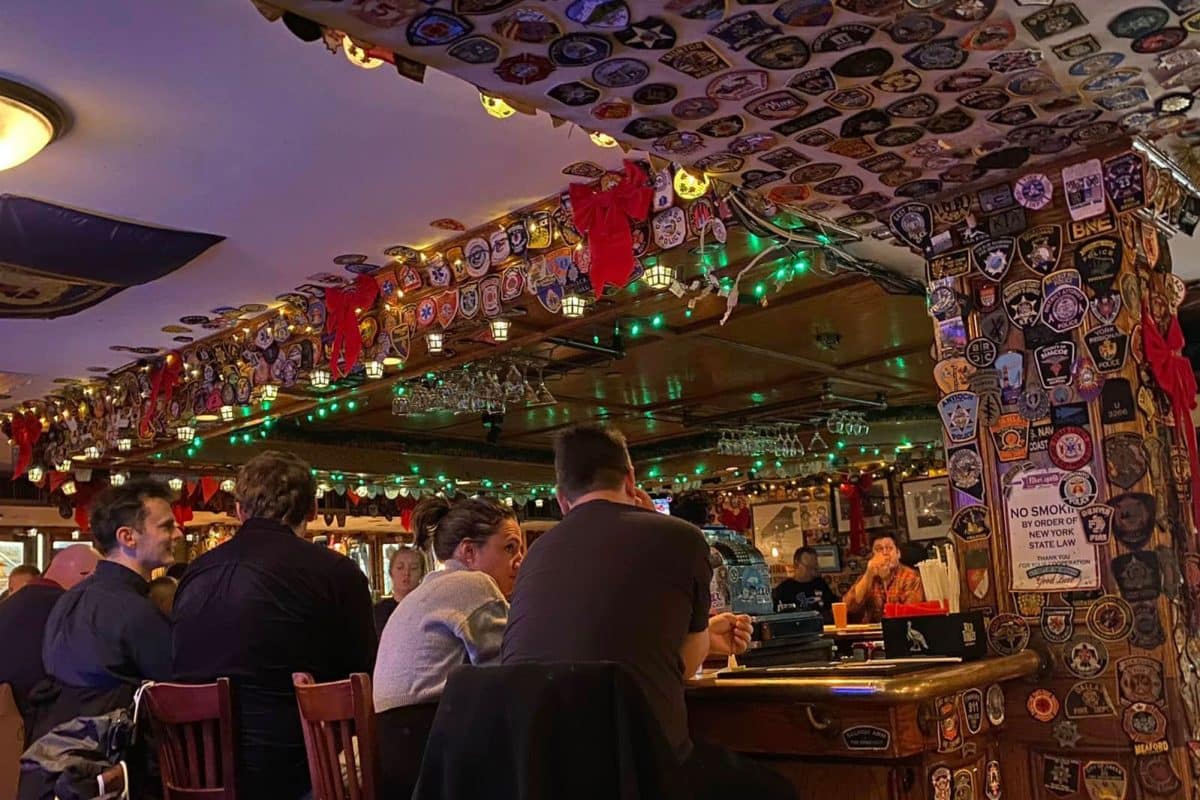
O’Hara’s Restaurant & Pub
120 Cedar St, New York
Where to stay in the Financial District?
Staying in the Financial District offers many advantages, including close proximity to some of New York’s most iconic landmarks, such as Wall Street, One World Trade Center and the 9/11 Memorial. It’s a neighbourhood that combines history, modernity and quick access to other parts of the city thanks to a well-developed public transport network.
The Financial District offers a wide range of accommodation, from luxury hotels to more affordable options, although rates are often influenced by the nature of the area, which is predominantly business-oriented. During the week, prices can be higher due to the presence of many professionals, but at weekends they can be more affordable as the area is less busy.
In terms of accessibility, this is one of the best-served areas of Manhattan. Several underground lines pass through the Financial District, including lines 1, 2, 3, 4, 5, A, C, J, Z, N and R, making it easy to get to Midtown, Brooklyn and Harlem. In addition, ferries departing from Battery Park allow you to explore the Statue of Liberty, Staten Island and Brooklyn via NYC Ferry.
The atmosphere in the district varies from day to day: very lively during the week, with the bustle of workers, it becomes quieter in the evening and at weekends, offering a relaxing setting after a day of sightseeing. Staying in the Financial District means taking advantage of a strategic location, with quick access to the city’s main attractions, all in a setting where modernity and history meet.
2 recommended hotels in the Financial District
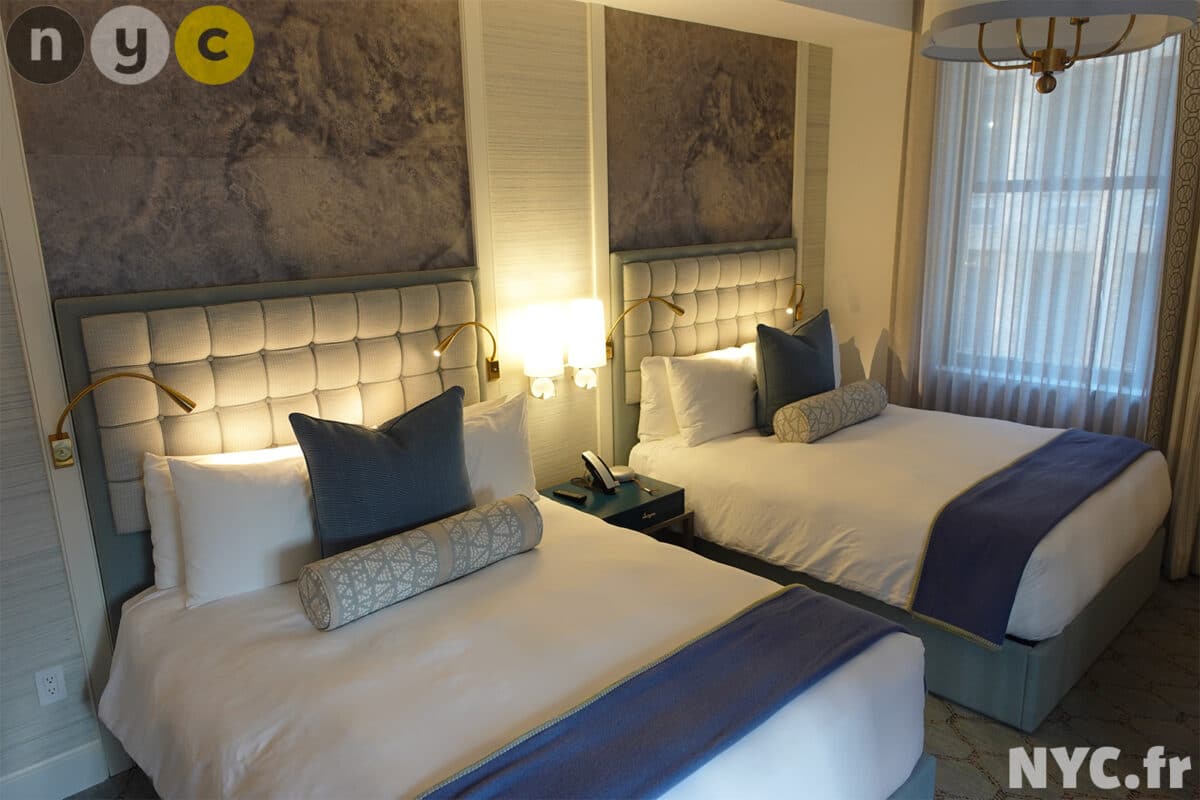
The Wall Street Hotel
Tourist areas near the Financial District
